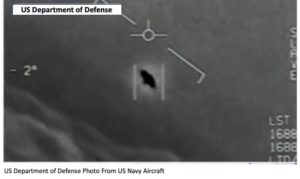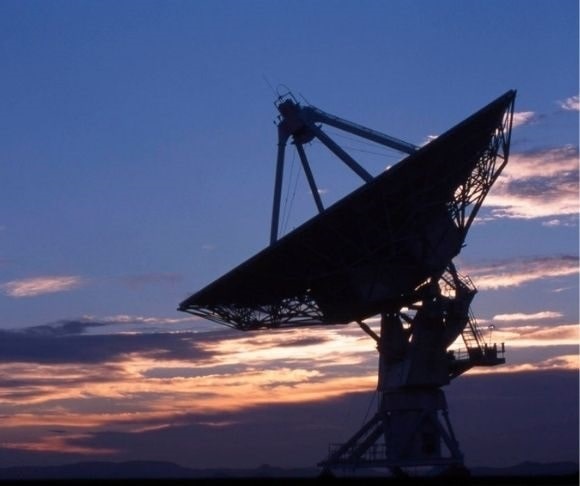First, the Pentagon, and now the National Aeronautics and Space Administration (NASA), is involved in determining what Unidentified Aerial Phenomena (UAP) are all about, according to a press release on June 9. A new study will be the first time in NASA’s history that the organization has taken on unexplained and baffling aerial sightings. With “space” in its name, it is curious that determining the origin of so many hundreds of unexplained airborne objects has never been part of NASA’s mission. Now it is.
NASA will commission the UAP study team to begin its work in the fall. The press release explains the group will be composed of “experts in the scientific, aeronautics, and data analytics communities to focus on how best to collect new data and improve observations of UAPs.” Leading the researchers will be astrophysicist David Spergel, president of the Simons Foundation in New York City and the former chair of the astrophysics department at Princeton University. Crafting the UAP study architecture and responsible NASA executive will be Daniel Evans, assistant deputy associate administrator for research at NASA’s Science Mission Directorate.
As NASA explains, it will coordinate across the government on “how to apply the tools of science to shed light on the nature and origin of unidentified aerial phenomena.” It is encouraging that throughout NASA’s study announcement, the emphasis is on using sophisticated scientific technology and techniques, indicating the agency is taking its mission seriously. There appears to be genuine enthusiasm for the UAP research and the technical capability to achieve credible results. Thomas Zurbuchen, NASA’s associate administrator for science at its Washington headquarters, said,
“NASA believes that the tools of scientific discovery are powerful and apply here also. We have access to a broad range of observations of Earth from space – and that is the lifeblood of scientific inquiry. We have the tools and team who can help us improve our understanding of the unknown. That’s the very definition of what science is. That’s what we do.”
The press announcement made clear that NASA’s examination of UAP was not part of the Pentagon’s Airborne Object Identification and Management Synchronization Group (AOIMSG). The AOIMSG is the congressionally mandated Department of Defense organization to determine if UAP represent a threat and, if so, find and take measures to address that threat. Additionally, an apparent difference between what NASA is proposing and the AOIMSG is the scope of NASA’s inquiry.
Spergel indicates his organization will be looking at a broad sampling of UAP sightings across the US. “Given the paucity of observations, our first task is simply to gather the most robust set of data that we can. We will be identifying what data – from civilians, government, non-profits, companies – exists, what else we should try to collect, and how to best analyze it,” the study leader said. The AOIMSG has constrained its sampling of UAP sightings to those in Special Use Airspace and military training areas. The low number of sightings has not been the problem. “Since last June’s Office of the Director of National Intelligence report on UAP, more than 400 new images have been collected,” Liberty Nation reported recently. The problem is that “detailed and accurate analysis of sightings” is complicated because the quality of the images or other data generated by the sightings is of low analytic quality.
 Another difference in the two analyses is the methodology each is taking. NASA is starting with purpose-selected investigative technology, science, and space environment. The Pentagon will analyze visual sightings and the data gathered from technologies designed for other purposes like targeting infrared sensors and radars carried by military aircraft. The upside is that products from these different approaches should constitute a very comprehensive stream of data.
Another difference in the two analyses is the methodology each is taking. NASA is starting with purpose-selected investigative technology, science, and space environment. The Pentagon will analyze visual sightings and the data gathered from technologies designed for other purposes like targeting infrared sensors and radars carried by military aircraft. The upside is that products from these different approaches should constitute a very comprehensive stream of data.
Academics and interested laypeople will be pleased with NASA’s policy of data release to the public. “Consistent with NASA’s principles of openness, transparency, and scientific integrity, this report will be shared publicly,” Administrator Evans explained. “All of NASA’s data is available to the public – we take that obligation seriously – and we make it easily accessible for anyone to see or study.” Congress also has been very interested in learning all it can about UAP and held a hearing to impress the Pentagon with its interest. Nonetheless, to avoid raising any off-the-page expectations, the press release stated clearly, “There is no evidence UAPs are extra-terrestrial in origin.”
However, it was not lost on folks who notice such things; NASA closed its website posting with a cryptic comment. Despite the disclaimer, the work was “unrelated to this new study,” the agency was in search of life in the galaxy, “using missions such as the Transiting Exoplanet Survey Satellite and Hubble Space Telescope, to search for habitable exoplanets.” So, we are left with the question. If UAP are not extra-terrestrial, why are we looking for “habitable exoplanets?”
The views expressed are those of the author and not of any other affiliation.




